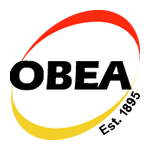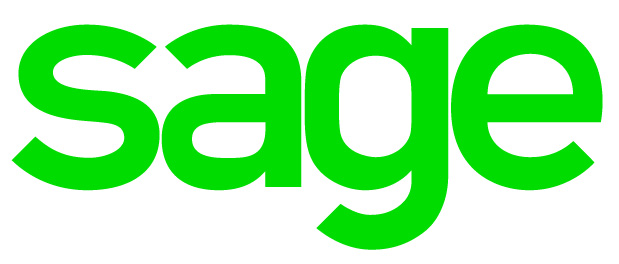 |
|
||||
 |
Forgot Member ID or Password? | ||||
|
|||||
2013 Robert Hillmer Award: Laura Pinto
Natalie Gerster presents Laura with her award.
Laura's Speech
I was humbled when I got the call from Linda Brown to let me know that not only had I been nominated for the Hillmer Award, but actually selected to receive it. It means a great deal to me that Elliot along with a number of colleagues for whom I have immense respect would take the time to nominate me. I want to especially thank Liz Coulson who can’t be here today, and whom many of you know from OISE.
When I was asked to prepare these remarks, I thought about the many Hillmer recipients before me and what they discussed. I have some big shoes to fill.
And so, like those who came before me, I reflected upon my longstanding connection to OBEA and I’ll try to share with you what I think OBEA represents.
Let me just begin with a little history. I started teaching in 1994 and began to attend conferences right away. Only a couple of years later I began my active involvement in OBEA thanks to Janice Ellerby who urged me to do a workshop. Before I knew it, that one workshop had somehow become four workshops at that one conference. About a decade later, after serving in various capacities to support the organization starting with Contest Chair, I was elected president.
Now, I think everyone here knows the organization’s provenance – supporting teachers since 1895. And most are aware that apart from conferences, OBEA also advocates for our profession, collaborates with the Ministry, offers us vast amounts of resources and phenomenal communication year-round. These are the things it does – but what does it all mean to us as individual professionals?
From the time I first attended an OBEA conference nearly 20 years ago, I felt part of a community. And not just any community, but a learning community that I soon learned was an inclusive place where people generously share everything they have; a community that challenges members think in new ways and pushes intellectual boundaries. Through OBEA, we all benefit from professional development in many ways – but so do our students. Dr. John Hattie, in his book Visible Learning (which is based on over 800 meta-analyses representing over 50,000 studies) cites teacher professional development as having among the highest effect sizes (0.62) on student achievement.
But as important as those professional aspects of the community are, OBEA is a humanistic community that supports each other. The connections I made at OBEA have endured – sometimes they became friendships. I first met Liz Coulson, who has been a partner on so many projects, here. Her friendship and the work we’ve done together mean the world to me. In other cases, OBEA has strengthened friendships. OBEA has added a new dimension to my friend Catherine Oake, a friend from before we became teachers. I got to know Kara Hiltz after she joined OBEA, and collaborating with her on all sorts of projects has been a highlight of my working life. And there are so many others – Zenobia Omarali, Elliot Skolnik, Debbie Michaelidis, pretty much all the members of the Executive – who have been personal and professional inspirations to me and enriched my work.
And it is this deep reciprocity among members that creates a community that works for us as professionals, and for our students. One thing I love about OBEA is hearing others share their diverse professional experiences. Hearing their ideas about education issues broadens my perspective, This has led to meaningful dialogues which not only expose me to issue relevance to our profession, but leads to important contributions to the field.
I like to think of what happens here, in Max van Manen’s words, as the transition from “habitual practice” to “intelligent practice” – that is to say, it is our moving from active knowing to cognitive knowing (van Manen, 1995). In other words, we can get stuck in our usual, habitual ways of working with students; but reflection can guide us into improved practice through thorough examination of our habits and move us towards new and innovative ways of approaching our work. That’s what OBEA allows us to do. As Dr. Allen Glenn, dean emeritus of education at the University of Washington, has said, “the biggest obstacle to school change is our memories” (Lucas, 2002, p. xiv). And so, through OBEA, we are exposed to ideas and practices that disrupt out habitual ways, and push us to new heights.
There are two tangible accomplishments of which I am very proud, and I think that they speak to the kinds of reciprocity among business educators. As those of you who have taken my courses (preservice, AQs, masters and PhD courses at Niagara University) know, I try to point you in the direction of OBEA as a phenomenal resource – and many of you have gone on to offer workshops.
The projects I will briefly describe today reflect my belief that business educators can make bigger differences through collaboration in communities. And they highlight how new and prospective teachers can collaborate with more seasoned professionals for reciprocal learning in the context of OBEA’s community of learners.
The first is the development of an edited collection called Business Studies Best Practices in my curriculum courses in 2009. Preservice teachers were asked to identify a “best practice” carried out in the field. Students were to interview the teacher who was doing that practice, get their permission to describe it, and submit a written article for the volume. It probably comes as no surprise than many teachers featured are OBEA members whose names you’d recognize from conference program. It was distributed through OBEA, and is still available online. This project brought the enthusiasm of new teachers, who saw and described best practices with fresh eyes, while recognizing excellence in diverse forms among this organization’s membership.
The second project was a collaboration I undertook with two preservice students starting in 2008 and eventually coming to fruition last year as 95 Strategies for Remodeling Instruction, which Corwin published. Upon their suggestion, we began documenting student-centred instructional strategies which I routinely used in class to share with peers. They were framed in the context of “lesson remodeling,” an approach to collaborative reflective practice I use in teaching methods classes. Again, this was a collaborative project that build communities of learners, not only among the authors, but in the field where it has been workshopped at various school districts here and in the US.
Knowing what an important organization OBEA is for all of us here today, once again I am most appreciative of this recognition, and I am honoured to be standing here. I will come back to my initial remarks about building communities of learners that inspire reflection and inquiry to conclude my statement. I have selected examples here that highlight how OBEA has fostered inquiry and built sustained communities and connections that I believe have contributed to our collective professional growth as business educators. The work we do here has more many positive impacts in the field – on students and on education – than I could begin to count.
A final thanks to you, my colleagues, as well as the people outside OBEA who have supported my professional efforts – especially my good friends and family, some of whom are here today: Adam Mock, Wendy Potomski, my father Dr. Robert Pinto, and Dr. Debra Colley and Tom Donovan who are here from Niagara University to support me. Thank you all for always encouraging me, and for being here for me today.
References
Hattie, J. (2013). Visible learning: A synthesis of over 800 meta-analyses relating to achievement. London: Routledge.
Lucas, G. (2002). Foreward. In M. Chen & S. Armstrong (Eds.) Edutopia: Success stories for learning in the digital age. San Francisco: Jossey-Bass, xiii-xvi.
van Manen, M. (1995). On the epistemology of reflective practice. Teachers and Teaching: Theory and Practice, 1(1), 33-50.
In this section:
Home |
About OBEA |
Conferences |
Contact Us | Contests |
Corporate Sponsor |
Curriculum Library |
Join OBEA
Newsletters |
Renew |
Scholarships |
Teacher Awards | Vendors | Privacy Policy
